After over 5 months of no tours due to Covid, it was good to get out with a small group again today – socially distanced and with due precautions of course. Tours from now on will operate as scheduled, but with reduced group sizes for the time being, so if you do want to come out with us in the coming months, please do get in touch.
A Wader Spectacular today, it was an early start to get up to the Wash ahead of the rising tide. We were blessed with good weather, a bit breezy first thing, but dry and bright with some sunny intervals, especially early afternoon.
The journey over to Snettisham out out to the edge of the Wash was uneventful. From up on the seawall, we could see the tide was just coming in and a big expanse of mud still stretched off into the distance ahead of us. There was a large gathering of waders up to the north of us still, a big black slick of Oystercatchers, surrounded by Bar-tailed Godwits and Knot. A selection of smaller waders was down on the near edge of the mud below us, Ringed Plovers, Dunlin and Turnstones. A colour-ringed Curlew appeared with them, but flew again before we could read the code.
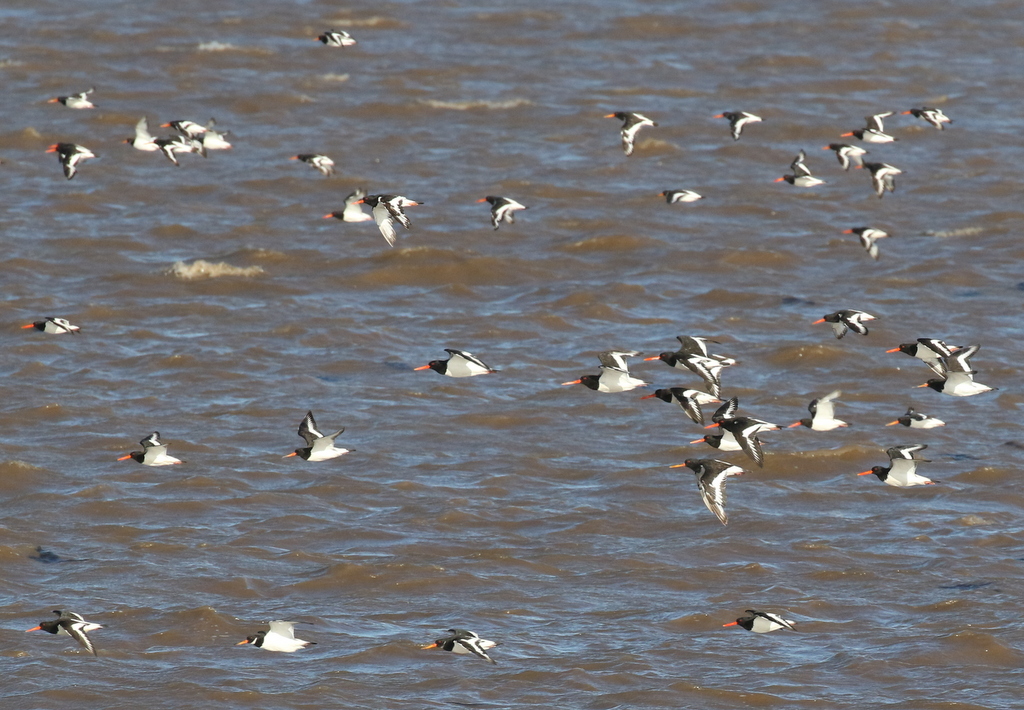
The water was coming in fast across the flats, and as it reached them the Oystercatchers and other waders started to take off, flying past us in long lines low. They headed out over the water before landing again in the middle of the still exposed mud to the south. Further out, a large flock of smaller waders whirled round, flashing alternately dark and light, and we looked up to see another mass of waders high overhead. Thousands of Golden Plovers, unlike the others, they feed in the fields and just go out onto the mud of the Wash as a safe place to roost.
In no time at all, all the mud in front of us had disappeared. We made our way further down along the seawall, passing several Sanderlings on the shingle below the bank on the way. The water had caught up with the mass of Oystercatchers again, and we watched for a while as they walked slowly across the mud, away from the rising tide. From a distance, it looked like the whole mass was a flowing liquid. Then we had to move further up still to keep ahead of the rapidly rising tide.
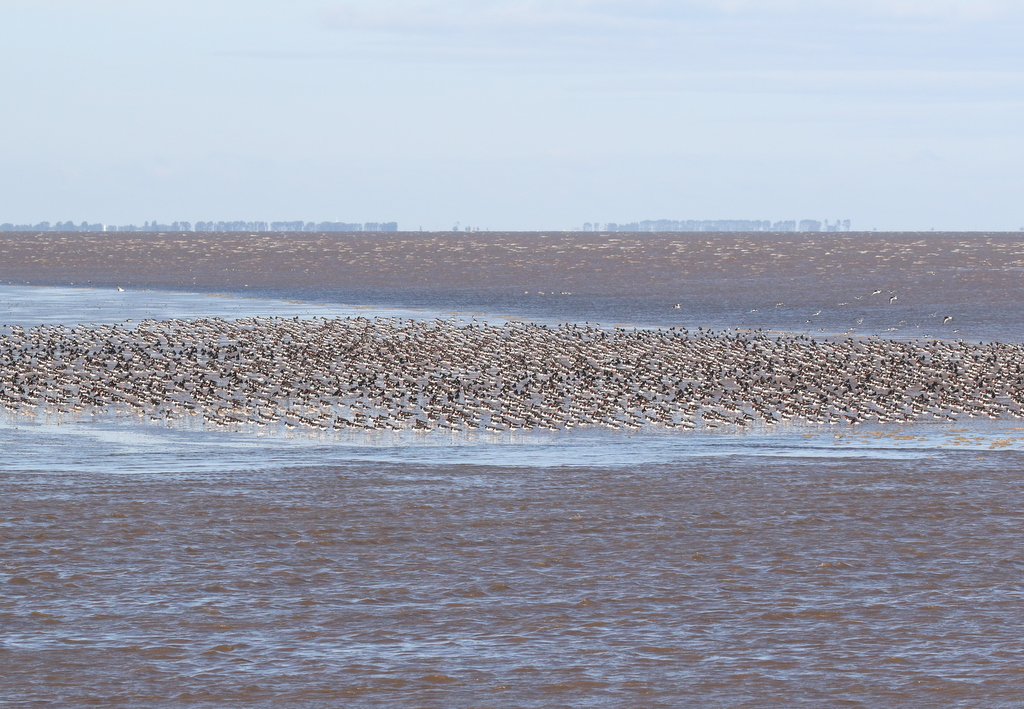
The Oystercatchers started to peel off, flying in past us in long lines, calling noisily, heading for the pit behind us to roost. There was still a bit of mud left uncovered and we could see lots of Curlews in the far corner, gathered on the dry mud on the edge of the saltmarsh. There was still no sign of the vast flocks of Knot gathering here, but we could see some smaller groups flying up occasionally further out, round the edge of the Wash – we figured the vast hordes were still gathered further out along the shore, out of sight.
We were still watching the Oystercatchers when a huge cloud appeared out in the distance. It looked like smoke at first, but as it came a little closer we could see it was tens of thousands of birds, mainly the Knot that we had been waiting for. Rather than landing on the remaining arc of mud closer to us, the birds decided to make an early beeline for the pits today and we stood in awe as they came overhead in waves, thousands, tens of thousands at time.
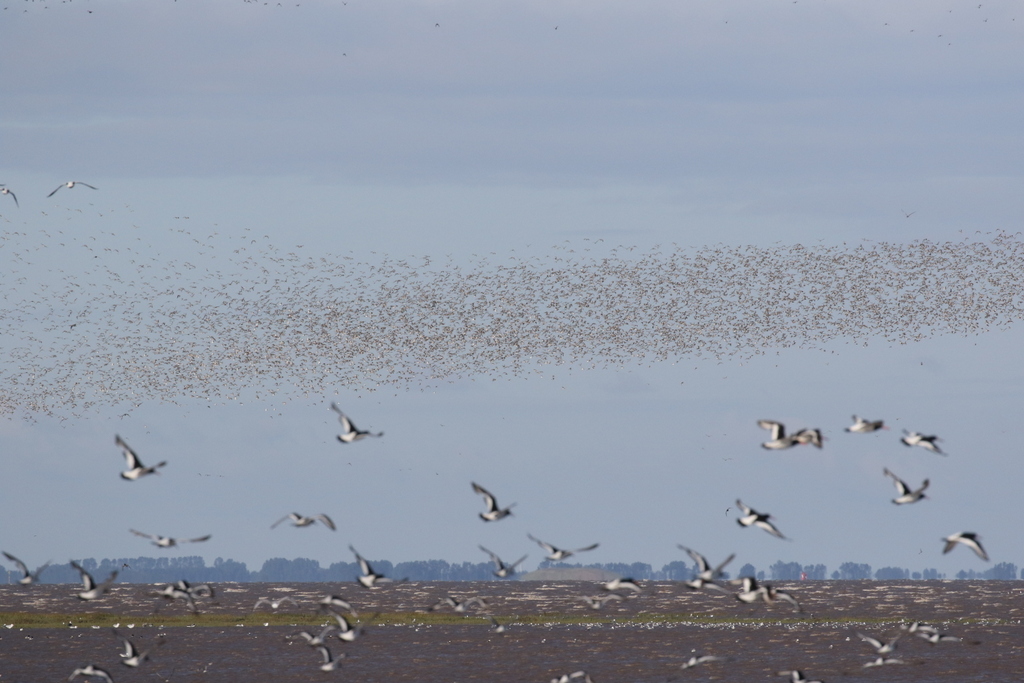
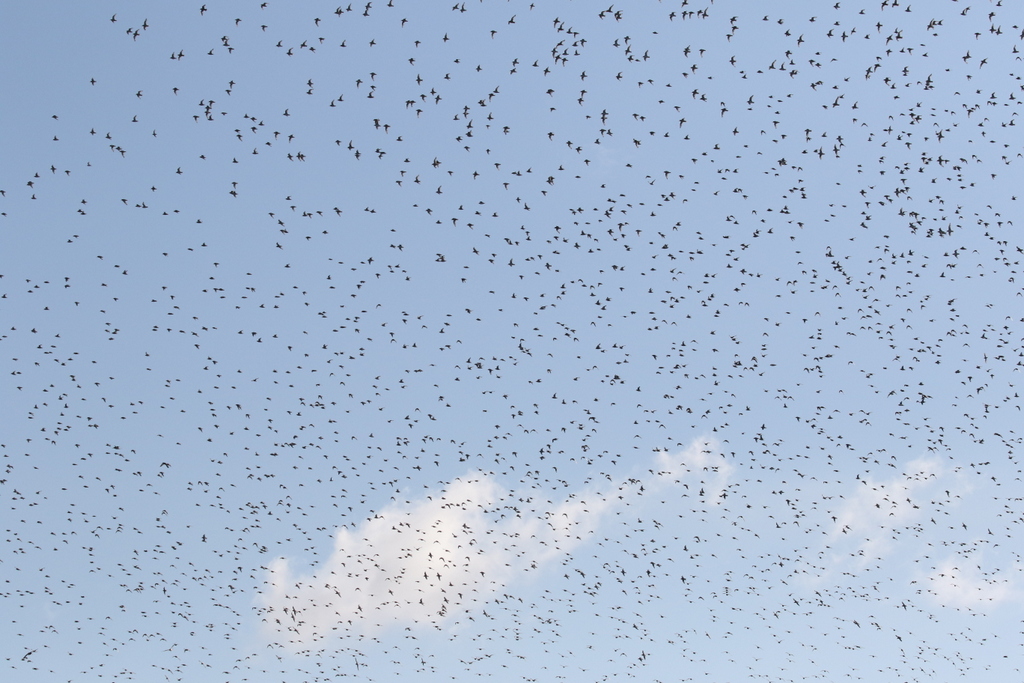
We turned and watched the birds swirling over the pit behind us, the skies now chock full of birds. They were nervous – some started to drop down to roost, while others towered back up and turned into the wind, heading back out towards the Wash. More Knot were still flying in above us, coming in underneath the flocks which had turned back and were now high in the sky, layers of thousands of birds moving in different directions. We could hear the beating of thousands of pairs of wings over the wind – mesmerising!
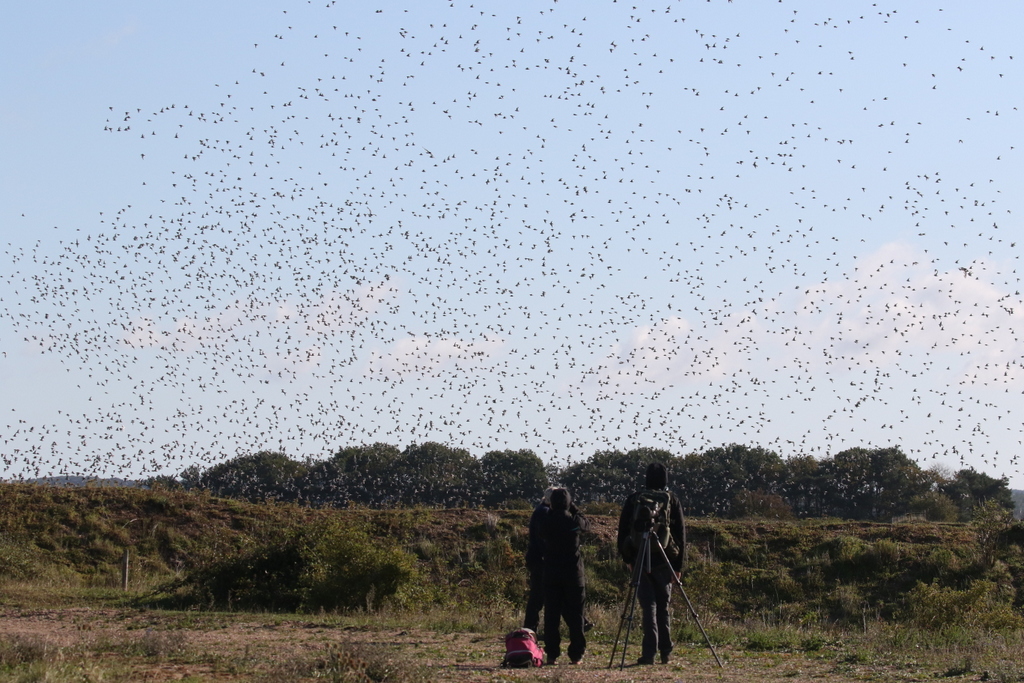
Some of the Knot landed back out on the Wash on the remaining mud, huddled in the last corner. We stood and waited and it wasn’t long before the rising tide eventually forced them off too, wave after wave, in overhead and down onto the pit. Then we turned and headed down to South Hide.
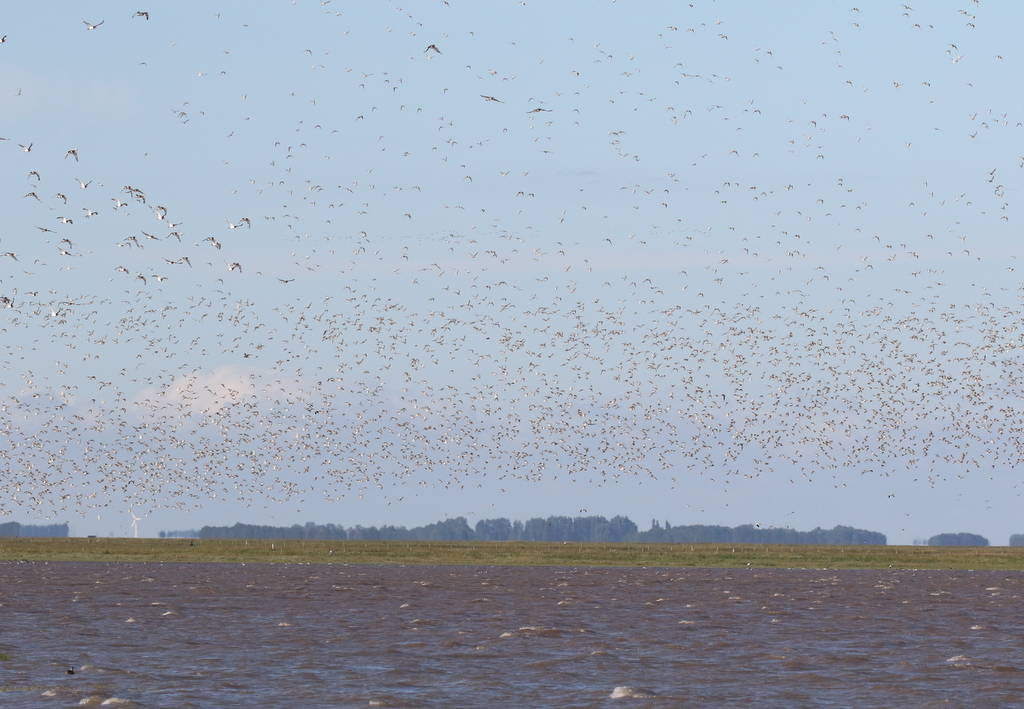

The small temporary hide was rather busy today, so we waited outside. Thankfully it didn’t take long before enough people had left and we could get in (socially distanced, and wearing the required face coverings, of course). There was an impressive gathering of Knot on the islands in front of the hide, packed in tight shoulder to shoulder, still jostling nervously. Some still wearing the remains of their orange breeding plumage, but others already moulted into grey winter dress.

Lots of Dunlin were gathered along the front of the hordes, in front of the Knot, many still sporting their black belly patches. Scanning through carefully, tucked in amongst them, we could see one which looked different, slightly larger, longer-billed, more neatly scaled on the back, and peachy buff on the breast, with a clean white belly. It was a juvenile Curlew Sandpiper, on its way from the breeding grounds way up in Central Siberia to spend the winter in Africa. Travelling on its own, its parents having left several weeks before, an impressive feat of hard-wired navigation. It was busy preening, and when it opened its wings we could see its distinctive white rump. When the crowd shuffled, it disappeared back into the throng.
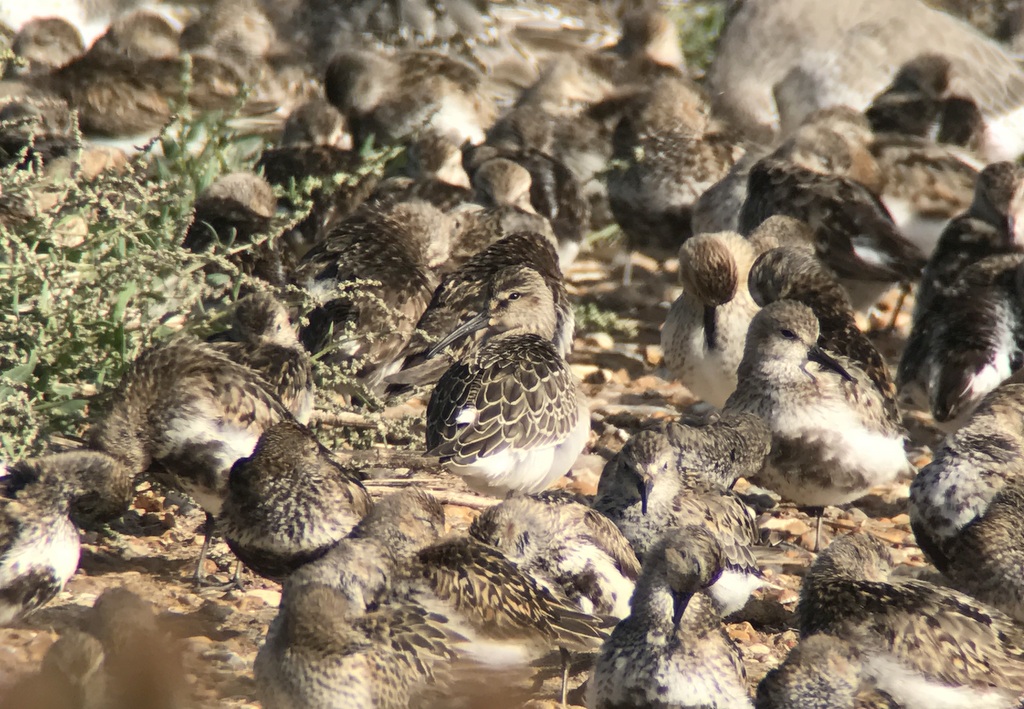
The pit was covered in birds. The flatter islands were covered in Knot and Dunlin and the gravelly banks on the sides of the pit were covered in Oystercatchers, with Black-tailed Godwits and Redshanks packed in along the shore below. There are normally some Spotted Redshanks here at this time of year, and we eventually found them out in the middle, roosting in the rocks in amongst the Cormorants and geese, rather distant from this end. A Moorhen with a brood of five small chicks worked its way round the edge of the pool below the hide and a Brown Hare ran across the grassy bank beyond.
Shore Hide looked emptier now, so we made our way back round. As we walked out beyond the boardwalk, a Common Swift flew past, heading south along the edge of the Wash. Many have left already, heading back to Africa after the breeding season, and just a few stragglers remain. A reminder that summer is almost over. A couple of Yellow Wagtails called and there were a few Meadow Pipits and Linnets in the grass as we passed.
There were a few terns on the small island in front of Shore Hide, mainly Common Terns, a mixture of adults and juveniles waiting for their parents to come back in from fishing out on the Wash, to be fed. Just a single Little Tern was in with them at first, smaller, yellow-billed and with a distinctive triangular white forehead patch. As we watched, more appeared, and by the time we left there were six Little Terns, including two juveniles. We later heard there had been quite a movement of Little Terns along the coast today.
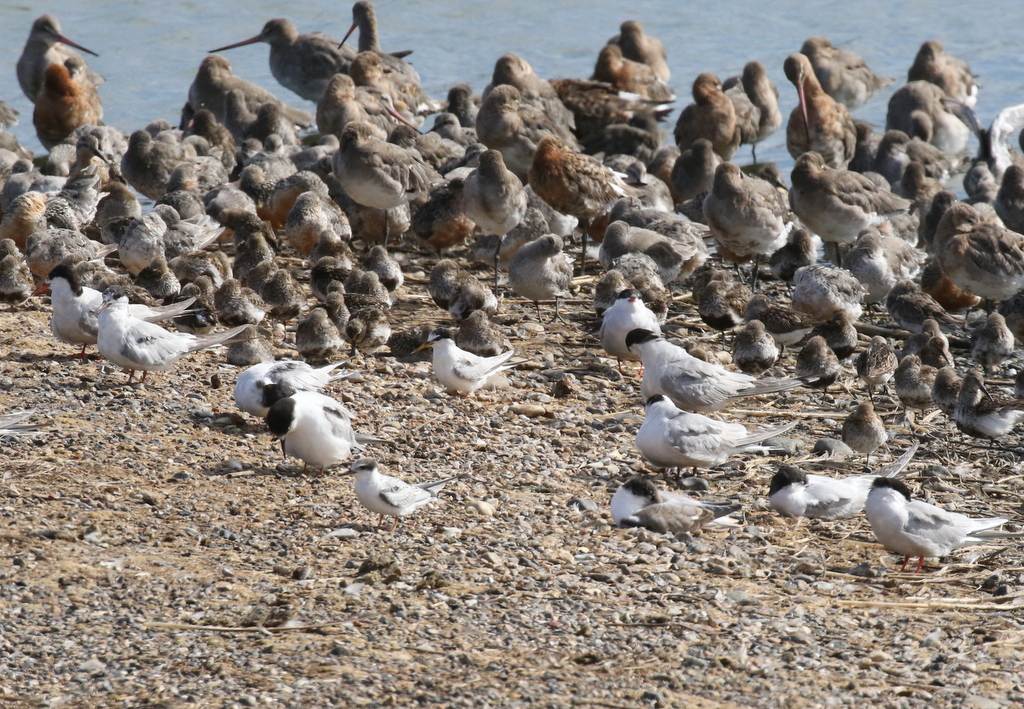
There were a few waders at the back of the island, Black-tailed Godwits, plus Common Redshanks and a handful of Knot in with them. We had a better view of the Spotted Redshanks from here too, out in the middle, already in their silvery-grey non-breeding plumage. Mostly asleep, occasionally one would wake up briefly and flash its long needle-tipped bill. A scan with the scope of the mass of Knot and Dunlin gathered on the islands further out produced a brief view of a Little Stint, but unfortunately it disappeared back into the masses as quickly as it appeared, before anyone could get a look at it. A Common Sandpiper flew past calling.
The waders were already starting to shift nervously now, so we made our way back out to the edge of the Wash. Even as we walked out of the hide, a large flock of Knot took off behind us and headed low over the bank and back out over the water. Even though it was almost an hour after high tide, there was still no exposed mud though – possibly the rather fresh west wind was holding up the tide this morning. The Knot turned round and headed back into the pit, presumably telling the others there was still time to wait yet.
Scanning out across the water, we could see a couple of Common Buzzards and Kestrels on the posts out on the saltmarsh in the distance. Gradually the mud started to reappear and the Oystercatchers started to fly back out in lines, landing in the shallow water. The Curlews started to reappear from where they had roosted on the saltmarsh, and were joined by a long line of Bar-tailed Godwits and Grey Plovers, the latter still with their summer black faces and bellies.
The Knot were slow to leave the pit today but eventually the first wave erupted, coming up low over the bank, over our heads and out low over the water. Presumably because that wave didn’t return, after a while another mass then came up from the south end of the pit, the ones we had been watching from South Hide earlier, a long line of thousands and thousands of birds. A third wave came up from behind us and back out low over our heads, to the sound of thousands of pairs of wings beating – very impressive again.
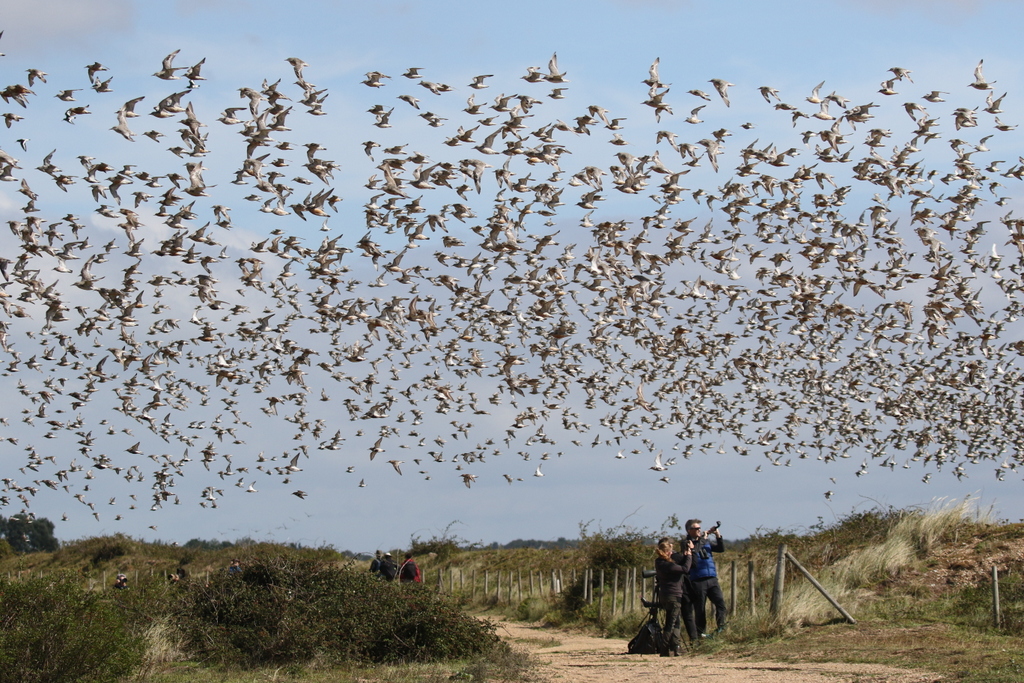
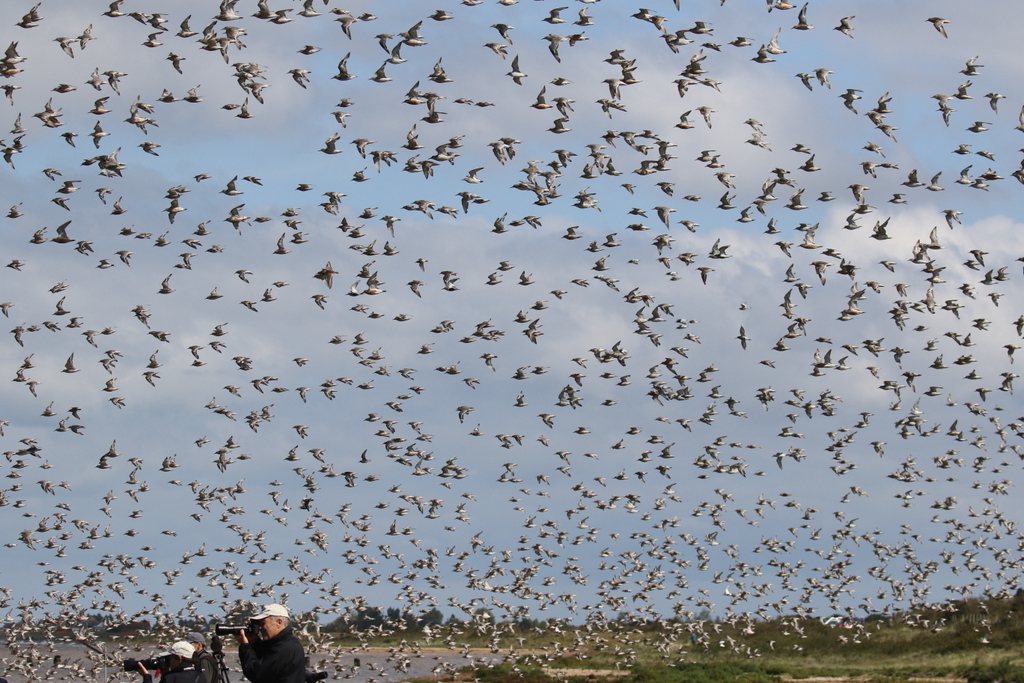
As more mud appeared, some terns and gulls appeared out on the Wash – including a Sandwich Tern and a couple of Mediterranean Gulls. There was still one island full of Knot left on the pit behind us, despite the vast numbers we had already watched fly back out to the Wash, but they were showing no signs of shifting. We decided to start making our ways back and it want until we were back past Rotary Hide that they flew back out behind us.
We made our way round to Titchwell next, but struggled to find anywhere to park at first. Half the car park is still closed off, as part of Covid measures, but with much higher numbers of staycationing visitors here this year, with correspondingly more beachgoers and dogwalkers wanting to park, it is resulting in a major squeeze in parking spaces. Hopefully at some point soon, the rest of the car park will be opened. While the group went off to the picnic area for lunch, eventually a space was secured.
We ate our lunch in the sunshine in the picnic area. Several Common Darters and a couple of Speckled Wood butterflies were basking on the benches in the sun. A couple of Chiffchaffs were calling in the sallows. After a break, we headed out to the reserve, past the Visitor Centre and out along the main West Bank path.
As we got out of the trees, we could feel the wind had dropped and it was very pleasant out on the path now. A Marsh Harrier flew in over the saltmarsh from the direction of Thornham, flushing a few Curlew and Lapwing. Two bright white Little Egrets stood out in the vegetation.
We stopped to look at the reedbed pool, which held a few Gadwall, Mallard and Coot. A pair of Mute Swans were in the channel just beyond. We had started to walk on, when we looked back to see a Great White Egret dropping into the reeds at the back.
Out at the Freshmarsh, we stayed out in the sunshine and scanned from the bank. After the blustery westerly winds of the last few days, the water had been blown back and the mud closest to us was getting rather dry. Still, there were a few Ruff feeding below us along the edge of the reeds, a tawny brown juvenile and a very different-looking adult, paler, white below and grey above.
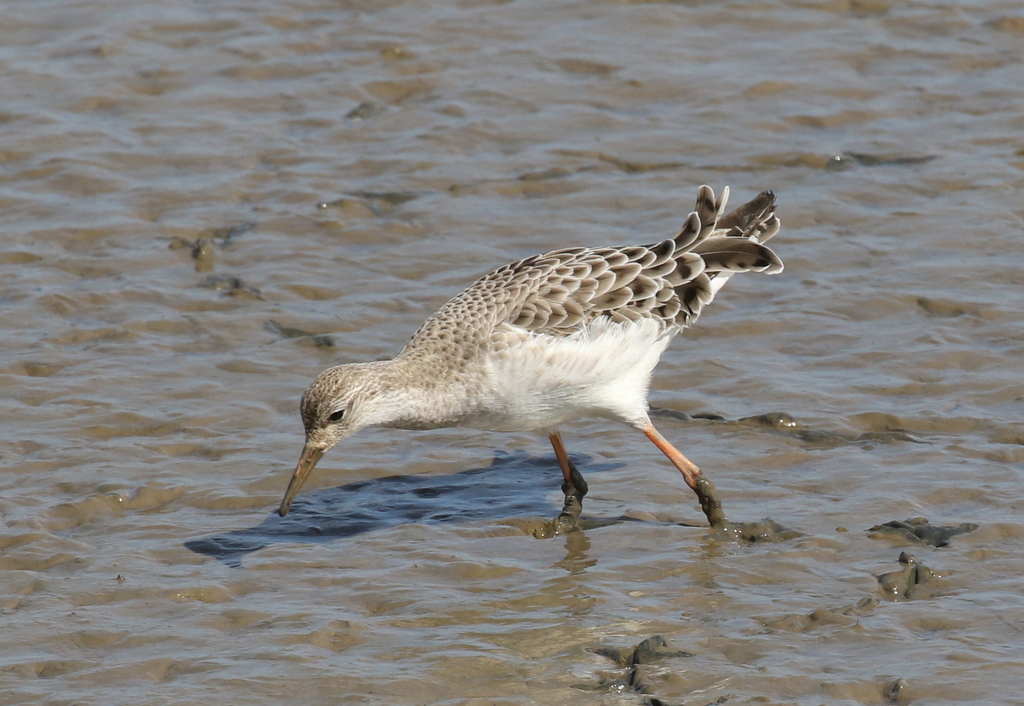
There were several little groups of Dunlin scattered around the edges of the islands and a juvenile Curlew Sandpiper loosely associating with one of them, although it seemed to prefer to feed on its own on the mud closer to the path.

Five large white shapes on one of the islands further back were Spoonbills, and doing what they like to do best – sleeping! Occasionally one would wake up briefly, just long enough to flash its long spoon-shaped bill – we could see a mixture of juveniles, with fleshy bills and at least one adult, with a yellow-tipped black bill. A few Golden Plover were in with the moulting ducks nearby. There were still plenty of Avocets scattered around too.
The Great White Egret appeared above the reeds before dropping back down again. Then the next time it flew up it came out and landed in the open on the mud. It didn’t stay long though, and flew straight back towards the reedbed pool. We could easily have spent the whole afternoon here, but we didn’t have much time so we decided to walk on towards the beach.
There was not much on Volunteer Marsh – a few Redshank and Curlew in the channel at the far end and a Little Egret fishing in the water on the corner, occasionally lifting its yellow feet out so we could see them. The Tidal Pools were still rather full, despite the tide being out now – they don’t seem to be draining freely again.
We were looking out over the water when one of the group spotted a Wheatear on a post behind us. It dropped down to feed on the dead vegetation washed in by the tide, before flying back up to the post flashing its white rump and then posing nicely for us. A migrant on its way south, just stopping off here. A flock of Linnets perched in the top of the suaeda nearby.
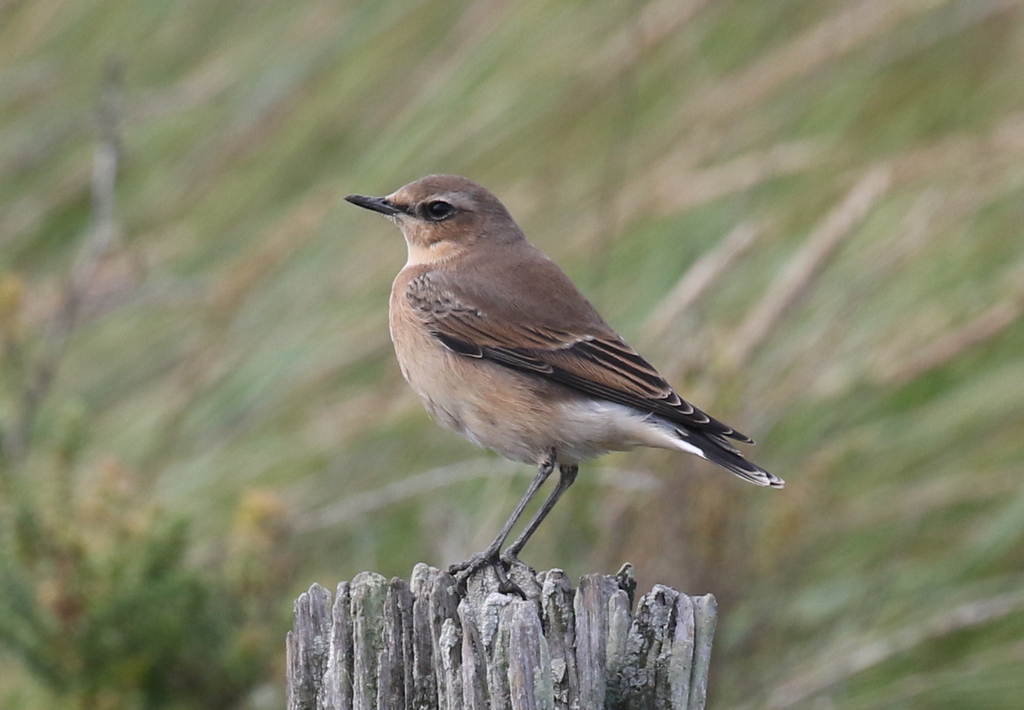
It was time to head back. As we walked past the Freshmarsh, we could hear Bearded Tits calling but they remained tucked down out of sight in the reeds, presumably working their way along the the muddy edge right at the bottom. A Reed Bunting was more obliging and perched up in the tops. Back at the reedbed pool, the Great White Egret was just visible, standing stock still, fishing, just behind the reeds at the front. We had a better view of its long, yellow, dagger-shaped bill.
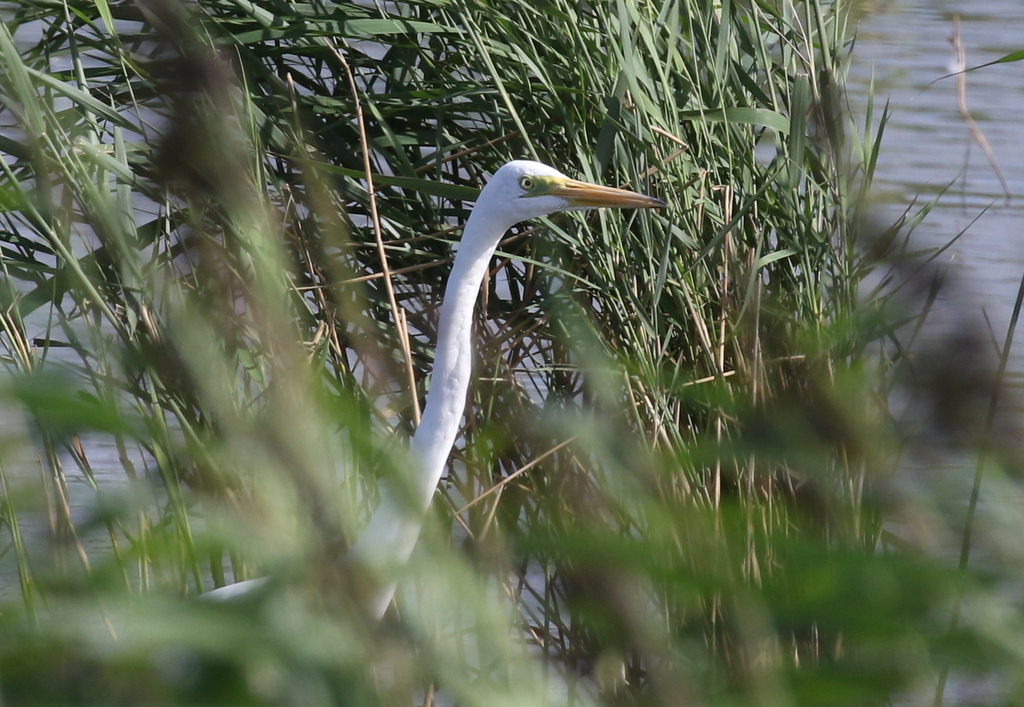
It had been a great day – the amazing spectacle of the waders on the Wash and a very pleasant couple of hours at Titchwell afterwards. A perfect way to restart the Autumn Tours.
















